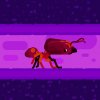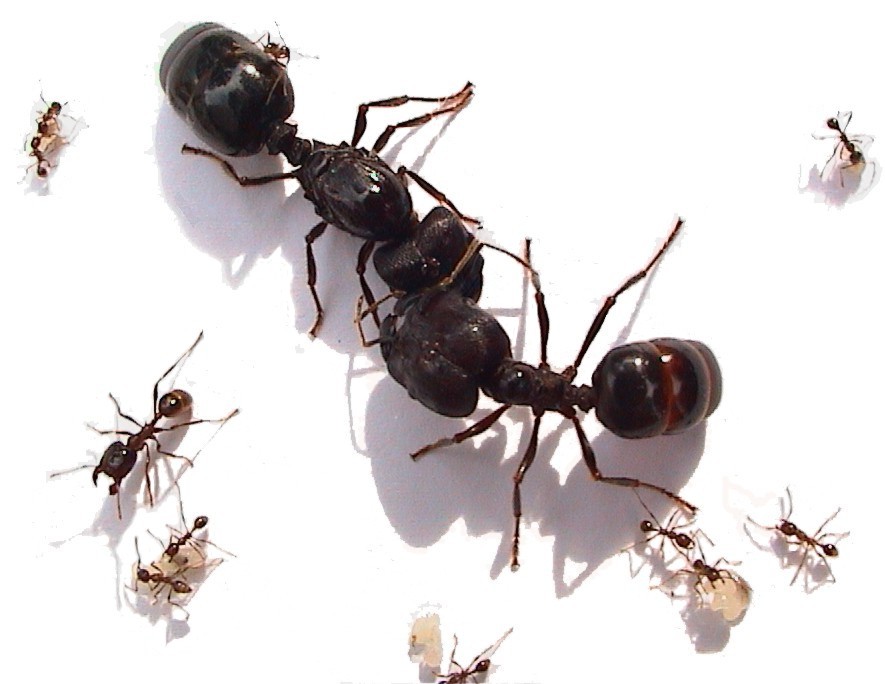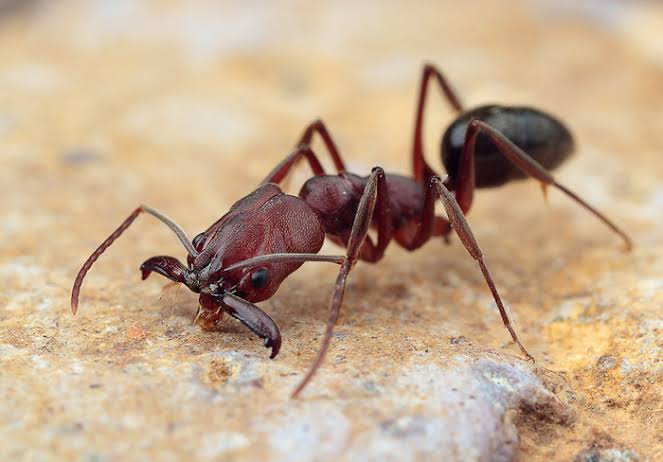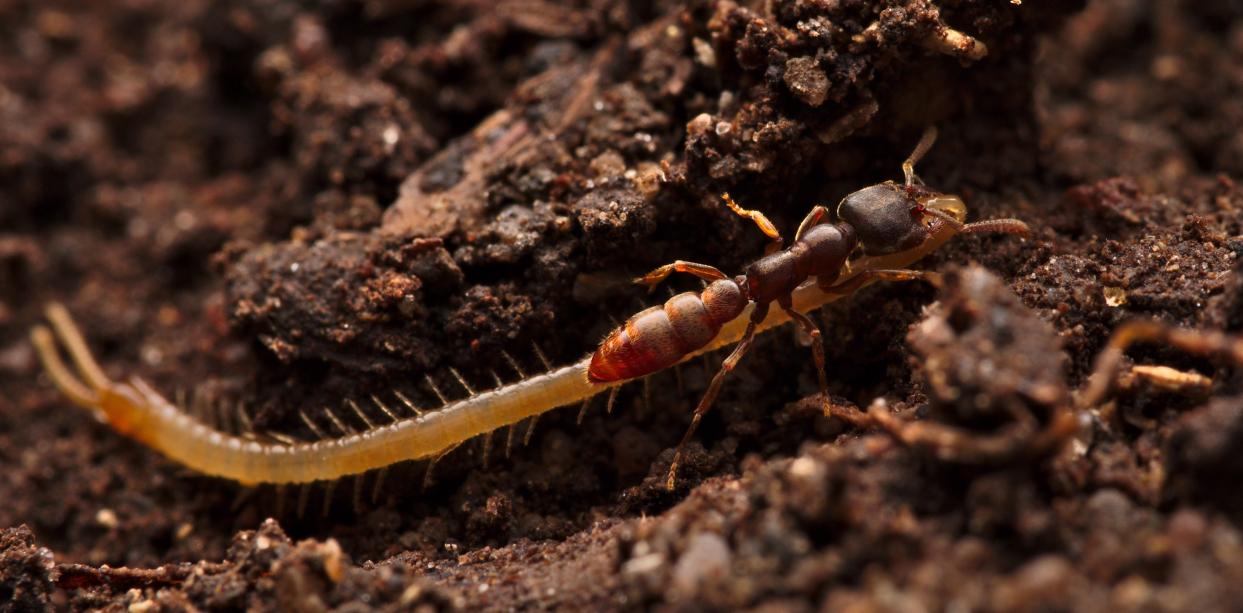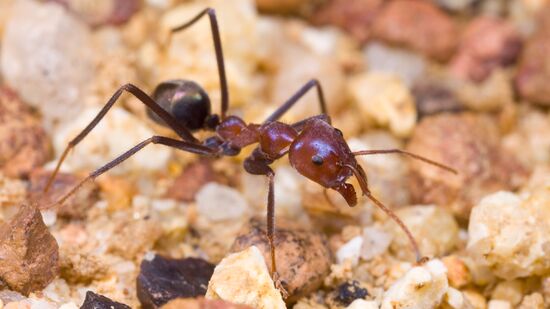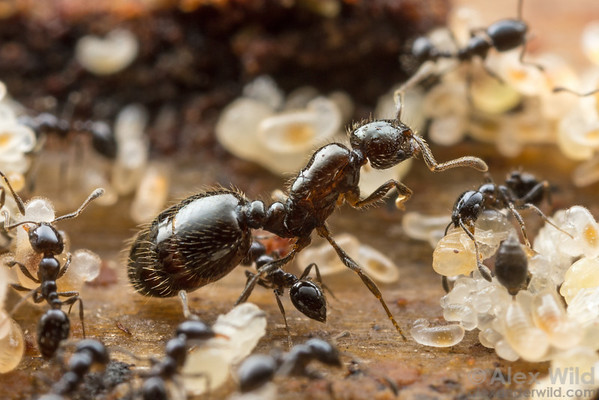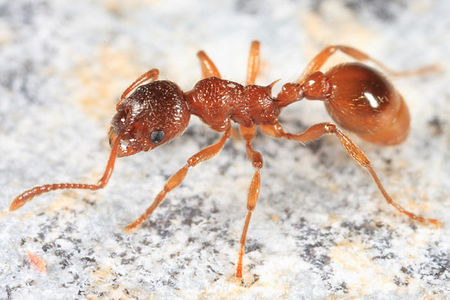Ant of the Day: Carebara diversa
(A C. diversa queen(above), and a major surrounded by various casts of C. diversa. Credit: Antstore)
Carebara diversa, or Asian Marauder Ants, are known for their long foraging trails, extreme polymorphism, and polyethism in their colonies, from small minors measuring 1.5-2.5mm in length to supermajors that weigh 550 times heavier than their most minor counterparts. The size difference between the casts is so extreme that multiple minor workers have been seen riding a major in foraging trails.
Carebara diversa ants are polygynous and can have up to 16 queens per colony, enabling the colony to have up to 500,000 individuals. Their average colony size is 20,000-100,000.
All these traits often make people mistake C. diversa with army ants. But there are crucial differences between Marauder ants and Army ants:
-
Army ants only have one queen.
-
Army ants do not build permanent nests.
-
Army ants do not have nuptial flights.
-
Army ants only hunt and eat insects.
Also, C. diversa is widely spread throughout India, Southeast Asia, Taiwan and the Philippines, while most army ant species are found in South America.
The diet of C. diversa primarily consists of insects. They also enjoy honey, fruit, jelly, nuts, and seeds. It was even recorded that up to 50% of the ant’s diets consisted of seeds during winter. Even though they are not picky about what they eat, they are not a beginner species. They are sensitive and difficult to keep due to their large colony sizes.
Sources:
https://www.antwiki.org/wiki/Carebara_diversa
https://en.wikipedia.org/wiki/Carebara_diversa
https://www.inaturalist.org/taxa/464748-Carebara-diversa
Edit: C. diversa is not polygynous but they do participate in pleometrosis.
Edited by IdioticMouse26, October 16 2024 - 12:49 AM.

